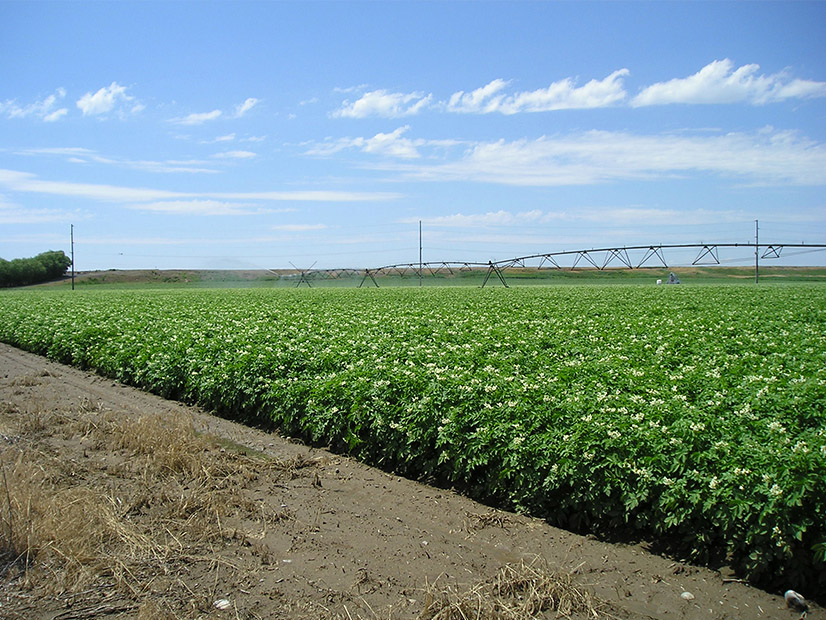
In its upcoming session, Washington’s legislature will likely set up millions in funding to deal with a probable drought in 2022.
Two similar bills are in the works to accomplish this, the Washington Joint Legislative Committee on Water Supply During Drought learned last week.
Gov. Jay Inslee’s office is working on one such a bill that would set aside $3 million to deal with any 2022 drought problems, a committee staff member said. Meanwhile, committee chair Sen. Judy Warnick (R) is putting together a bill that would provide $5 million. Warnick speculated that the two efforts would end up cooperating.
In July, Inslee declared emergency drought conditions for roughly two-thirds of the state, which triggered government actions to deal with the lack of water. The measures include moving water withdrawal allowances from one area to another for the duration of a declared drought, finding other emergency water supplies and dealing with situations when water has become scarce enough to hamper the passage of salmon up and down streams.
“When we left the session in April, who knew we were going to have a drought?” Warnick said.
Inslee blames the drought on climate change. The joint committee only meets during years in which a drought is declared by the state government. State officials believe a 2022 drought is inevitable.
The two bills being written will address how to take drought countermeasures more quickly. “To move quickly is of the utmost importance,” committee member Rep. Tom Dent (R) said.
The bills will also try to prevent emergency withdrawals from exceeding existing water rights. And Warnick said funding sources need to be identified for expanded drought-related relief.
“We need to increase certainty around funding,” said Jeff Marti, the drought coordinator for the Washington Department of Ecology.
Other potential planks include authorizing the Ecology Department to allocate emergency funds as soon as the governor declares a drought and routinely setting aside money per budget biennium to deal with future droughts.
A major reason that state officials expect a drought to reemerge in 2022 is that this year’s drought was so severe that Washington would require 150% of its regular rainfall through next spring just to recover the lost water in the agricultural breadbasket of the Columbia River Basin.
“That’s not likely to happen,” state climatologist Nick Bond said.
At a Sept. 29 committee meeting, the legislators were briefed on how the drought has cut back on Washington’s agricultural output. (See Crops, Wildlife Suffering Under Wash. Drought.)
“This was a horrible year for wheat,” said Michelle Hennings, executive director of the Washington Association of Wheat Growers. “The harvest this year was 46% of 2020’s wheat harvest, and that was the state’s lowest wheat harvest since 1964. “
“We had everything from complete crop failures to low [numbers of] bushels [per acre],” Hennings said.
The state’s cherry harvest dropped 20% from 2020. Cherries are a major Washington export to Pacific Rim nations.
The drought’s impacts on potatoes differed throughout the state. There was no impact in the Columbia River Basin south of Grand Coulee Dam. However, southeast of Grand Coulee, the aquifer faces future shortfall.
Potatoes are heat sensitive, said Chris Voigt, executive director of the Washington State Potato Commission. Potatoes grow best in 75 to 80 degrees F, but they stop growing in the 90-95 degree range. That’s when they become misshapen and more susceptible to diseases and insects. All this translates to smaller yields and possibly more sugar in the potatoes, which produces more browning in French fries than restaurants want.
Meanwhile, the northwestern corner of Washington produces 85% of the nation’s red raspberries. This year’s heat cut the harvest by 30% below normal.
“Is this a once-in-a-century event or a sign of what’s to come? We don’t know that,” said Henry Bierlink, executive director of the Washington Red Raspberry Commission.
“If we lose them, the country will wonder that Washington did to lose the raspberry growers,” Rep. Mike Chapman (D) said.
